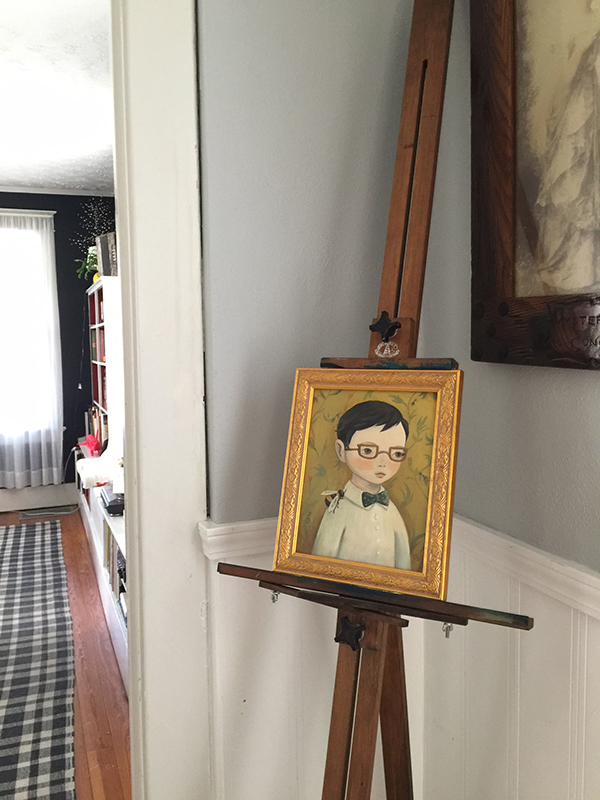
Boy & Bee by Emily Winfield Martin, 2013
You can read a little about the boy beekeeper on Emily’s blog.
On Tuesday, we talked about why we collect art. Yesterday, we talked about how to find your own style. Today, in part 3 of How to Start Your Art Collection, we’re going to talk about actually acquiring your piece. (FYI: This is the best part!)
Finding an original piece of art really is like a treasure hunt. You know who you like, you’ve researched where to find them, and then you play the waiting game. Eventually, that piece goes on sale and your brain is completely distracted until it is yours! A painting, sculpture, or limited edition print is something that the artist has often put hours of work into, and it is an honor to hang it on your wall. But before you can, there are a few things you need to know about the process.
First, Know Your Terms:
acid-free paper or canvas: These materials have been treated to neutralize their acidity. This means that your work should be protected from discoloration or deterioration.
limited edition: These are identical prints that are printed in a limited run. Because there are fewer, they’re usually worth more. If you look beside the artist’s signature, you’ll see a handwritten number. For instance:
7/80 mean it was the seventh print pulled from a run of eighty.
There are countless terms I could mention but, instead, I highly recommend this site.
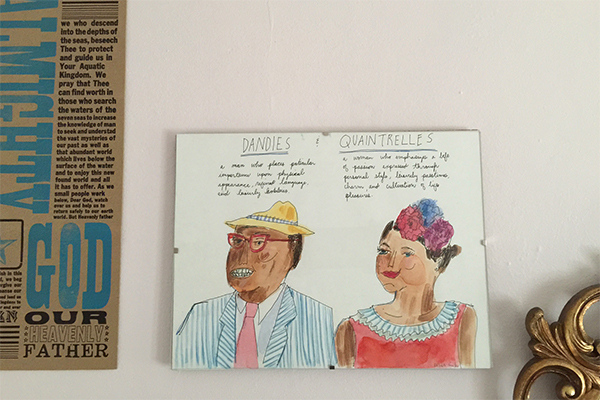
Dandies & Quaintrelles by Elizabeth Graeber | Elizabeth Graeber is someone I first discovered through social media. Given our obsession with seersucker in the South, I snatched up a print as soon as I could. Then, when the original became available, I bought that too!
There are several ways to go about acquiring art to fill your home. Here I’ve mentioned my main three with some details about each.
Buy directly from the artist.
It’s the age of the internet, y’all! Art has gotten more personal than ever, and you can now get to know the artists you support. I read Emily Winfield Martin‘s blog for years before I was able to buy one of her originals. I keep up with most of my favorite artists via Twitter and some artists, like Keyth Ryden, literally sell their art on social media.
Check out Artsy.
Artsy is where the fine art scene is moving. (Check out this article in Fortune.) I have been completely overwhelmed by this site, and I absolutely cannot believe it’s free! Artsy is a website that allows you to “follow” your favorite artists (from Édouard Manet to Lisa Congdon), see any works of theirs that may be for sale, and follow galleries and museums.
But aside from being a new media marketplace, it is also an amazing educational tool. As someone who spent many college credits taking extra art history classes, the “Education” section is where I’ve spent a lot of my time. Artsy actually employs a team of art historians who map connections in art to help people discover art they may not otherwise come into contact with. They call it The Art Genome Project.
Buy from a gallery.
Galleries tend to focus on a primary group of artists. To illustrate, let me tell you about the latest piece of art we invested in.
A few weeks ago, I saw that there was a Dr. Seuss pop-up shop in NYC (via LoveTaza’s instagram of one of my fav Dr. Seuss pieces). This sent me down a rabbit hole until I landed on Dr. Seuss’ art site–a site that specifically focused on his artistic work not a site for kids to download Cat in the Hat coloring pages. So I looked through the collection and sent the link to Husband.
We are both huge fans of black and white work as well as naughty puns. So when he pointed out “Booby Trap,” we couldn’t resist! But, in order to acquire the work, we needed to contact the closest gallery to us that sold Dr. Seuss’ work. This happened to be Ann Jackson Gallery in Roswell, Georgia. So I gave them a call, they confirmed it was available and told me the price. After we ordered the print from them, they contacted the place that stores the prints (most likely a larger gallery) and had it sent to us. In other words, the galleries are dealers that act as the middle man between you and the art!
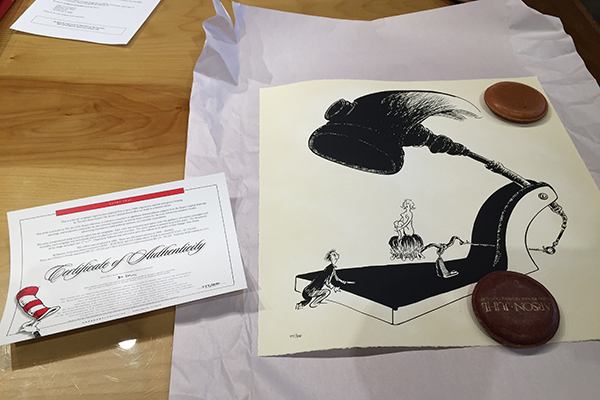
A shot of the latest treasure we’ve added to our collection: a serigraph by Dr. Seuss. We’ll tell you more about it tomorrow.
How much does art cost?
I cannot possibly emphasize this enough: There is art out there that you can afford. Find it. If you’re interested in collecting, it’s a good idea to start building up an art fund.
If you’re really looking at art as investment, after doing quite a bit of online research, I’d suggest starting with $1,000 to $5,000. Find a dealer you trust who can help you find something that will be a true investment, or use a service like Artsy to help you find that trusted source. When you start dealing with more expensive works, I’ve found that the Blouin Art Sales Index could prove helpful at lending a little context to some of the numbers.
In most cases, I don’t suggest negotiating. This is where having trusted dealer can help because they know how to help you make informed decisions about where to spend your money. Also, don’t forget to factor into the price how much it will take to properly preserve your art, which we’ll talk about tomorrow.
Click here to read part 4 in the series “How to Start Your Art Collection: Framing Your Art”
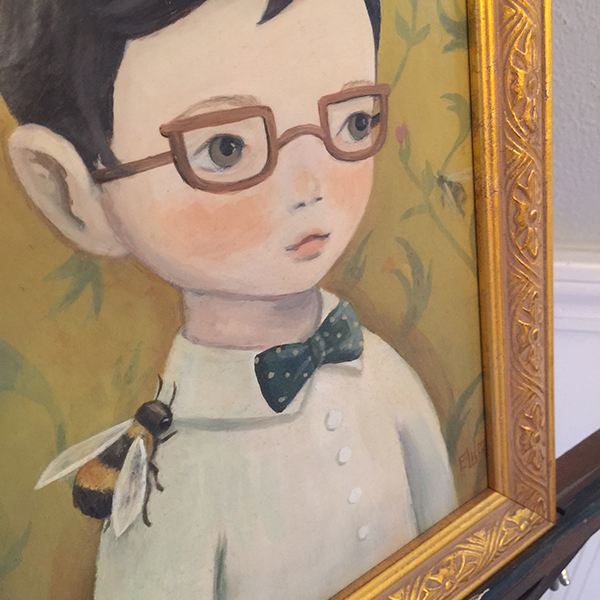

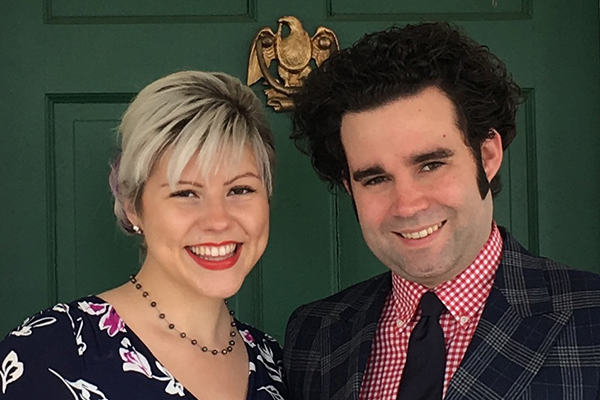
I like the Boy and Bee painting, it reminds me of my son, and I was wondering if you were the owner of the original and if you might like to sell it. Thank you.
Hi Steph! I am the owner of the painting, and we are not looking to sell it at this time. However, the artist is Emily Winfield Martin, and I know she sells prints of her work in her shop: https://www.etsy.com/shop/theblackapple